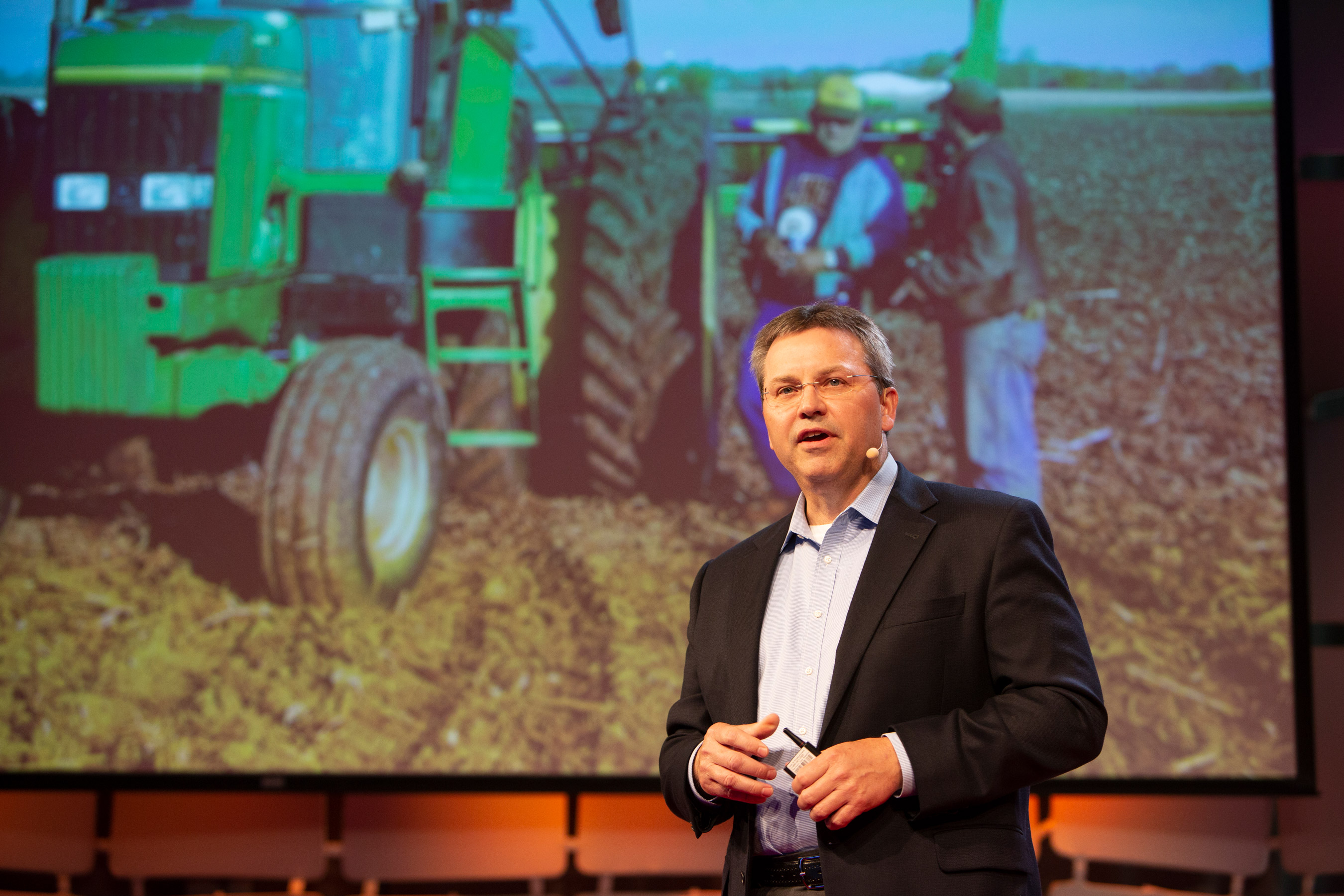How machine learning and sensors are helping farmers boost yields

Agriculture is always modernizing, but most farmers struggle to collect data that’s useful—or to analyze it in useful ways. That’s changing: emerging tools for data collection and analysis are helping boost yields and make farming more sustainable, according to Sam Eathington, chief science officer at the Climate Corporation.
In the next five to 10 years, “we’re going to see an explosion of sensors and collection of data from the farm,” Eathington said during his talk at MIT Technology Review’s EmTech conference today.
The Climate Corporation—originally founded in 2006 by a pair of former Google employees and now owned by German chemical giant Bayer—has developed tools to gather information from a variety of sources, including sensors on farming equipment as well as in the field. The data from these disparate sensors is then analyzed in the cloud.
The company is building increasingly sophisticated models that help farmers understand which crop hybrids will produce greater yields under certain weather and soil conditions, or what fertilizer levels will be optimal in a particular setting.
Other tools like drones, satellites, and in-field cameras are also helping farmers to detect, and respond to, early signs of disease.
The firm’s software models are helping farmers produce eight additional bushels of crops per acre, which can add up to a huge financial difference in the often low-margin business of agriculture, Eathington said. Around 80 percent of the time, the company’s models outperform the recommendations of scientists who study soil management and crop production, he added.
In addition to helping farmers make a living, these kinds of tools could also become crucial for meeting global food demands as climate change creates increasingly volatile conditions.
Keep Reading
Most Popular
Large language models can do jaw-dropping things. But nobody knows exactly why.
And that's a problem. Figuring it out is one of the biggest scientific puzzles of our time and a crucial step towards controlling more powerful future models.
How scientists traced a mysterious covid case back to six toilets
When wastewater surveillance turns into a hunt for a single infected individual, the ethics get tricky.
The problem with plug-in hybrids? Their drivers.
Plug-in hybrids are often sold as a transition to EVs, but new data from Europe shows we’re still underestimating the emissions they produce.
Google DeepMind’s new generative model makes Super Mario–like games from scratch
Genie learns how to control games by watching hours and hours of video. It could help train next-gen robots too.
Stay connected
Get the latest updates from
MIT Technology Review
Discover special offers, top stories, upcoming events, and more.